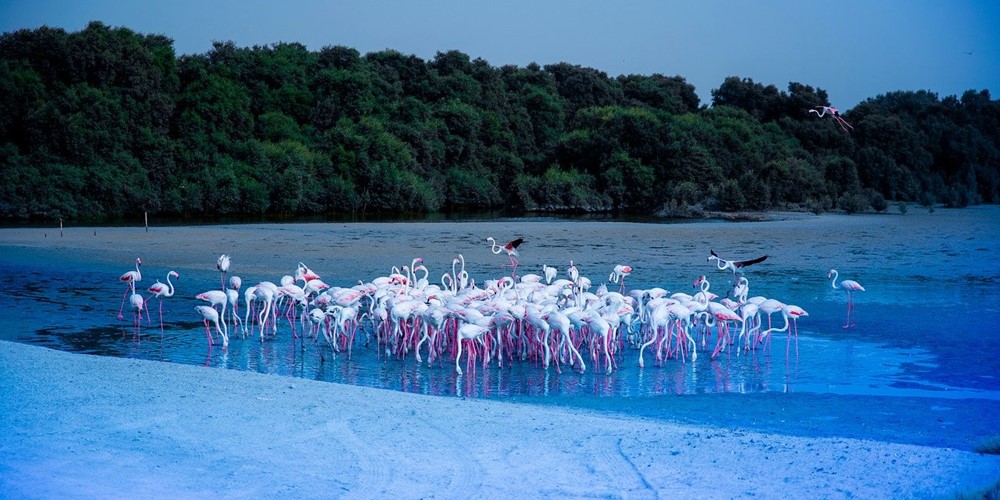If you’re a nature and wildlife lover, skip the mega skyscrapers of Dubai for a while and put Ras Al Khor Wildlife Sanctuary on top of your bucket list and itinerary. The sanctuary is one of the few sites in the world dedicated to protecting animals, plants, and insects. Here’s a comprehensive guide to planning a responsible and hassle-free visit to Ras Al Khor Dubai and the bespoke sanctuary.
Things to Know Before Visiting Ras Al Khor Wildlife Sanctuary
Ras Al Khor Dubai is a special and protected sanctuary on the outskirts of the city, so you must prepare your visit with special precautions and instructions in mind. We have here everything you need to know before you book your visit.
What is Ras Al Khor Wildlife Sanctuary?
Ras Al Khor Wildlife Sanctuary is a protected wetland sanctuary in Dubai dedicated to birds, fish, crustaceans, small mammals, insects, and exotic plants. It mainly attracts migratory birds in the UAE and other parts of the world. Currently, the sanctuary shelters more than 20,000 birds of 67 species in its 1,300 hectares of wet and dry land. Flamingos take up the largest population.
Due to the increasing number of environmental issues affecting the global ecosystem, the sanctuary is now one of the only urban protected areas in the world. The local government of Dubai has taken the liberty to protect, preserve, and improve the biodiversity of the sanctuary, keeping the animals away from public harm.
Who Can Visit Ras Al Khor Wildlife Sanctuary?
There is no entry restriction at Ras Al Khor Wildlife Sanctuary, but parents and guardians are advised to keep an eye on their children to avoid accidents involving animals. For other visitors who also need assistance, such as pregnant women and people of determination, note that other parts of the sanctuary are not wheelchair accessible or have steep trails and paths. Therefore, it’s best to bring companions if you need assistance.
Is Ras Al Khor Wildlife Sanctuary Safe and Regulated?
The Ras Al Khor Wildlife Sanctuary is being managed, regulated, and protected by the Dubai Municipality to protect both humans and animals. Visitors are not allowed to get close contact with some insects, plants, and animals for safety purposes. The management has provided strategic locations where visitors can get a closer view of the birds and other species. The sanctuary and the protected animals are also fenced off to keep boundaries.
COVID-19 Considerations
All tourist attractions and public areas in Dubai follow special health and safety measures to combat COVID-19. Ras Al Khor Wildlife Sanctuary is required by the World Health Organization (WHO) and local authorities to ensure social distancing among visitors, sanitize publicly-used areas, conduct temperature checks for staff and guests, and promote contactless payments. Some areas and activities inside may limit the number of visitors a day based on local regulations.
Visitors, too, are required to follow individual safety protocols. Visitors should wear face masks at all times, avoid physical contact among staff and other visitors, and submit basic personal information for contact tracing purposes.
All these COVID-19 protocols are still subject to change daily, weekly, or monthly. The local and the national government could release amended safety protocols in the future as the pandemic progresses and new solutions arise.
When is the Best Time to Visit Ras Al Khor Wildlife Sanctuary?
Ras Al Khor Wildlife Sanctuary timings vary, depending on the month of the year and the migrating behavior of the birds. Opening hours are 7:30 AM to 5:30 PM from October to March (Winter) and 6:00 AM to 6:00 PM from April to September (Summer). The sanctuary is usually closed on Fridays, Saturdays, and during national holidays. When they operate on a Friday, the operation is limited to 3 hours, from 2:00 PM to 5:30 PM.
It’s best to inquire or search the timing on your day of visit. Regardless of the date, however, it is recommended to visit at 10:00 AM or 4:00 PM each day to witness the flamingo feeding time. Also, make sure that the tides are low during your visit.
How Long Should You Explore Ras Al Khor Wildlife Sanctuary?
You can set aside 1 to 2 hours of your time to visit and explore Ras Al Khor Dubai and its offerings as a sanctuary. You can simply discover the different types of species in the area or participate in activities like bird feeding time. Regardless of your planned itinerary, note that you can stay as long as you want or at least before closing time at Ras Al Khor Dubai.
Where is Ras Al Khor Wildlife Sanctuary Located?
Ras Al Khor, which literally translates to “Head of the Creek”, is located on Dubai Creek, just meters away from the city center. It is located at Ras Al Khor Road, Ras Al Khor Dubai, UAE. The Sanctuary is 11 minutes away from Dubai Creek Tower, one of the tallest supported towers in the world, and 15 minutes away from Dubai Frame, the biggest picture frame in the world.
Preparation Tips and Visiting Procedures
Ras Al Khor Dubai is the first place you should visit in the city if you’re a nature lover. If you wish to place the sanctuary on your itinerary, here’s a visiting guide and some preparation tips to help you reach the site sound and hassle-free.
How to Get to Ras Al Khor Wildlife Sanctuary?
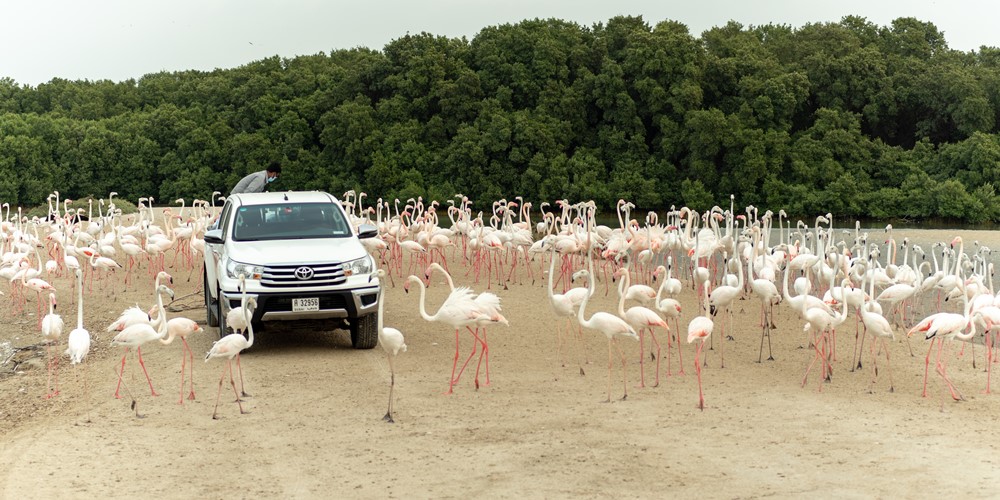
Ras Al Khor Dubai is located at the very end of Dubai Creek, but it is accessible by the city’s main roads. You can easily reach it through public and private transportation. Travelers with private or rented vehicles can easily reach the attractions from the city center or other neighboring areas through Rebat St. / D83 or Ras Al Khor Road / E44 in approximately 15 minutes.
If you want to commute, city buses can take you to Ras Al Khor Dubai and other surrounding areas. Take buses 55, 61, 63E, E16, and X23, depending on your location, then alight at the Aden Street 1 – 01 Bus Station. It will take you a 14-minute walk from the station to reach Ras Al Khor Wildlife Sanctuary.
Currently, there’s no direct metro and light rail station leading to the sanctuary. The best option is to travel by car, taxi, or through the aforementioned city buses.
What Should You Wear and Bring at Ras Al Khor Wildlife Sanctuary?
The sanctuary is a wetland reserve and a public area in Dubai, so prepare your visit with some essentials to have a hassle-free experience. Here are some reminders on what to bring, what to wear, and what you should leave behind for your visit.
Clothing
The Ras Al Khor Wildlife Sanctuary consists of wet and dry lands to cater to different species they shelter, so wear comfortable and protective clothing, such as t-shirts, jackets, and closed-toe shoes. While considering the environment, you should also follow the UAE’s general rule for public dressing. Dress modestly. Avoid shorts, short skirts, sleeveless tops and undershirts, and flip flops.
Food and Drinks
To protect the animals and maintain the cleanliness of the place, food and drinks are prohibited inside the sanctuary. You can take your meals outside the site or visit the nearby cafes, restaurants, and stalls in the area.
Recording Equipment
Cameras and other recording equipment are allowed inside the sanctuary. However, put all your devices in silent mode to not disturb the animals. Flash photography in some areas is also not allowed. Read the signs placed on each area of the sanctuary before taking photographs and video recordings.
How to Book My Visit at Ras Al Khor Wildlife Sanctuary?
You won’t have to worry about the Ras Al Khor Wildlife Sanctuary ticket price because the entrance fee for all visitors is free. For group visits under an organization, academic institution, media institution, and more, you can contact or apply directly to the Marine Environment & Wildlife Section, Environment Department, or Dubai Municipality for your visit. If your purpose of the visit is approved as a group, you’ll be given electronic tickets.
What to Do at Ras Al Khor Wildlife Sanctuary
Ras Al Khor Wildlife Sanctuary is one of the only urban protected areas in the world, so expect to see a variety of species maintaining the ecological balance in the area. To plan or structure your visit, here are the top things you shouldn’t miss.
Visit the Flamingo Hide
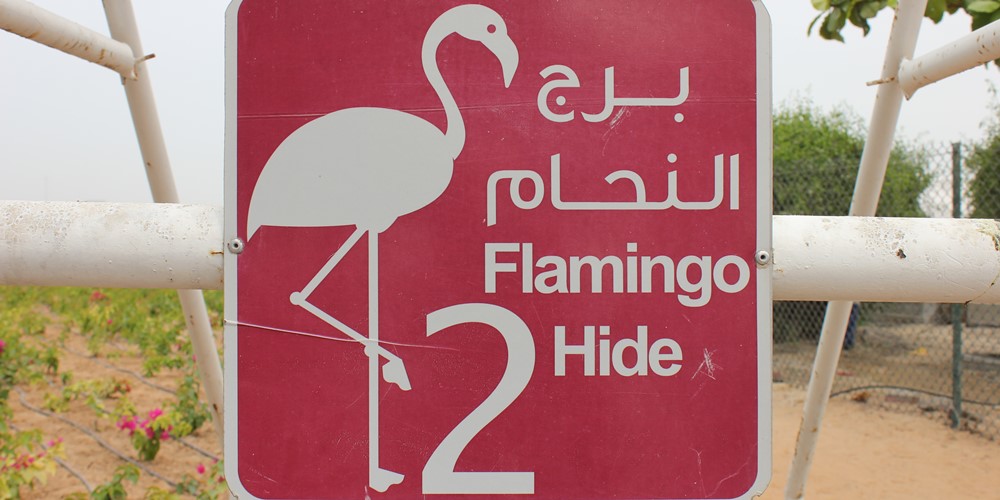
Flamingos take up the largest number of species in the sanctuary. They are fed generously by staff, and visitors have a chance to see the feeding sessions up close during mornings and afternoons.
The sanctuary shelters different types of flamingos, including the Greater Flamingo, the largest and most widespread living species of its kind in Africa, India, the Middle East, and southern Europe. Due to their numbers, flamingos have a hide of their own, but they share their surroundings with other bird species, such as Eagles, Avocets, Kingfishers, Herons, Teal, Spoonbills, and more. The Flamingo Hide is located at the second gate of the sanctuary.
Visit the Mangrove Hide
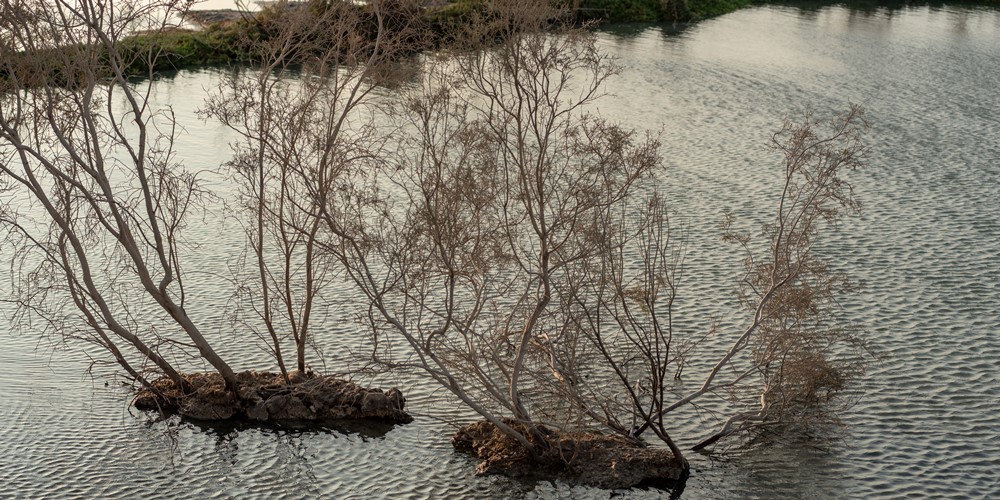
The hide offers a perfect view of the mangrove forest on the southern edge of Ras Al Khor Dubai. It’s a great place to watch over rare species of birds in a closer location. The sanctuary provides access to a Leica telescope for bird viewing from 10:00 AM to 3:00 PM.
The hide can shelter over 400 birds during peak summer, though many bird species can migrate or hibernate to other areas for long periods. Some popular and rare species you can spot at the hide include the Pacific Golden Plovers, Broad-billed Sandpipers, Greater Spotted Eagles, Pied Kingfisher, Demoiselle Crane, and Great Crested Grebe. The Mangrove Hide is located at the first gate of the sanctuary.
Explore the Protected Flora and Fauna
The Ras Al Khor Sanctuary is a habitat for more than 450 species of fauna and 47 species of flora—all scattered on the intertidal mud, sand flats, and mangrove swamps of the area. Considering Dubai’s weather and temperature, you can encounter plant species like String of Bead, Red Thumb, Desert Hyacinth, Grey Mangrove, Bean Caper, and Salt Cedar.
Befriend Small Mammals and Reptiles
Although not as big as the sanctuary’s bird habitat, it also houses various sites for small mammals and reptiles. Like birds, they are also protected and sheltered. Some of the mammals living in the sanctuary today are Black Rats, Cape Hares, Ethiopian Hedgehogs, and Arabian Red Foxes. The reptiles include Horned Vipers, Saw-Scaled Vipers, Sand Racers, Desert Monitors, Blue-Headed Agamas, and Fringe-Toed Lizard.
Go For an Educational Trip
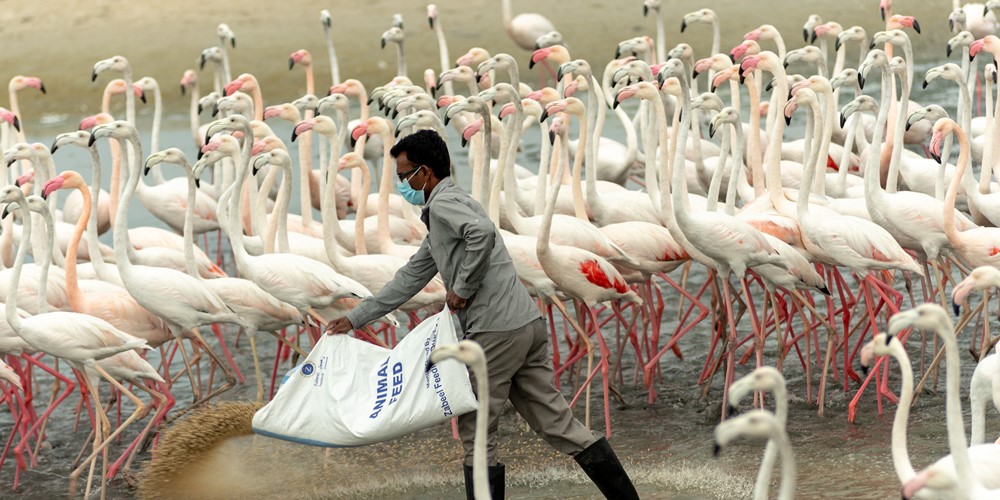
The Dubai Municipality offers educational programs, workshops, and awareness lectures to daily visitors and students at Ras Al Khor Dubai during special events. If you happen to see an offered program on the day of your visit, sign up and participate in an educational session. You can also opt for a Protected Areas Guide while visiting the Mangrove and Flamingo hides. The guides provide interpretative talk with short sessions identifying the birds and different species in the sanctuary.
Final First-Timer Tips to Visiting Ras Al Khor Wildlife Sanctuary
Aside from following our comprehensive guide to visiting Ras Al Khor Wildlife Sanctuary, you also need to follow the wildlife sanctuary’s instructions and guides strictly, such as avoiding flash photography, bringing food and drinks, and animal contact. Safety precautions should also be followed at all times as some wild animals can be dangerous. Keep your distance and follow the designated viewing areas. In the end, you’ll only have a hassle-free visit to Ras Al Khor Wildlife Sanctuary if you’ll be a responsible visitor.
What to Do After Visiting Ras Al Khor Wildlife Sanctuary
For nature lovers who love visiting attractions similar to what Ras Al Khor Dubai offers, we recommend visiting Dubai Miracle Garden and Dubai Butterfly Garden. If you want to interact with more native animals, swim with dolphins, ride a camel, or book a complete desert safari tour in Dubai. Don’t let the skyscrapers and luxury malls in the city stop you from exploring Dubai from a new perspective.
